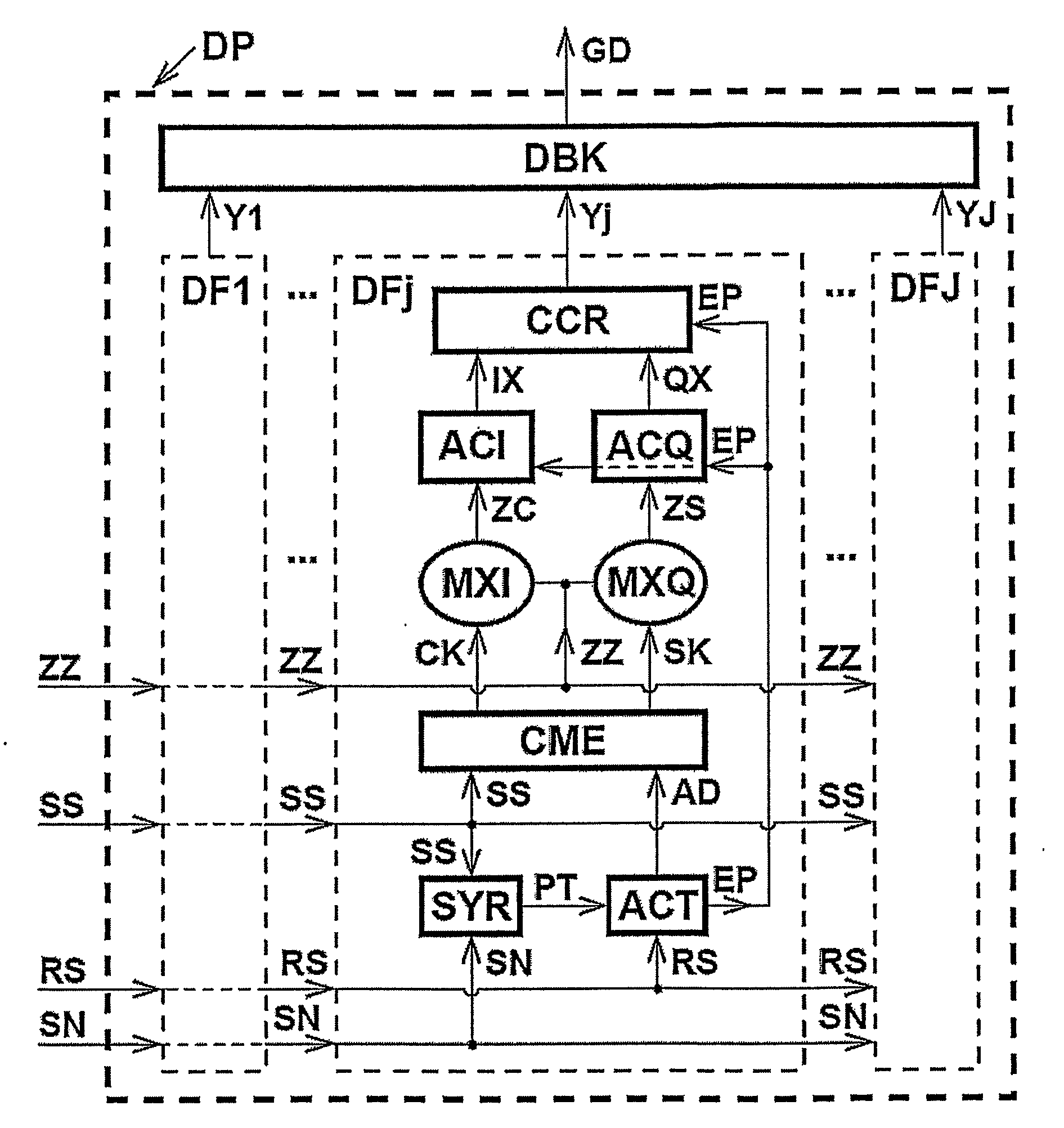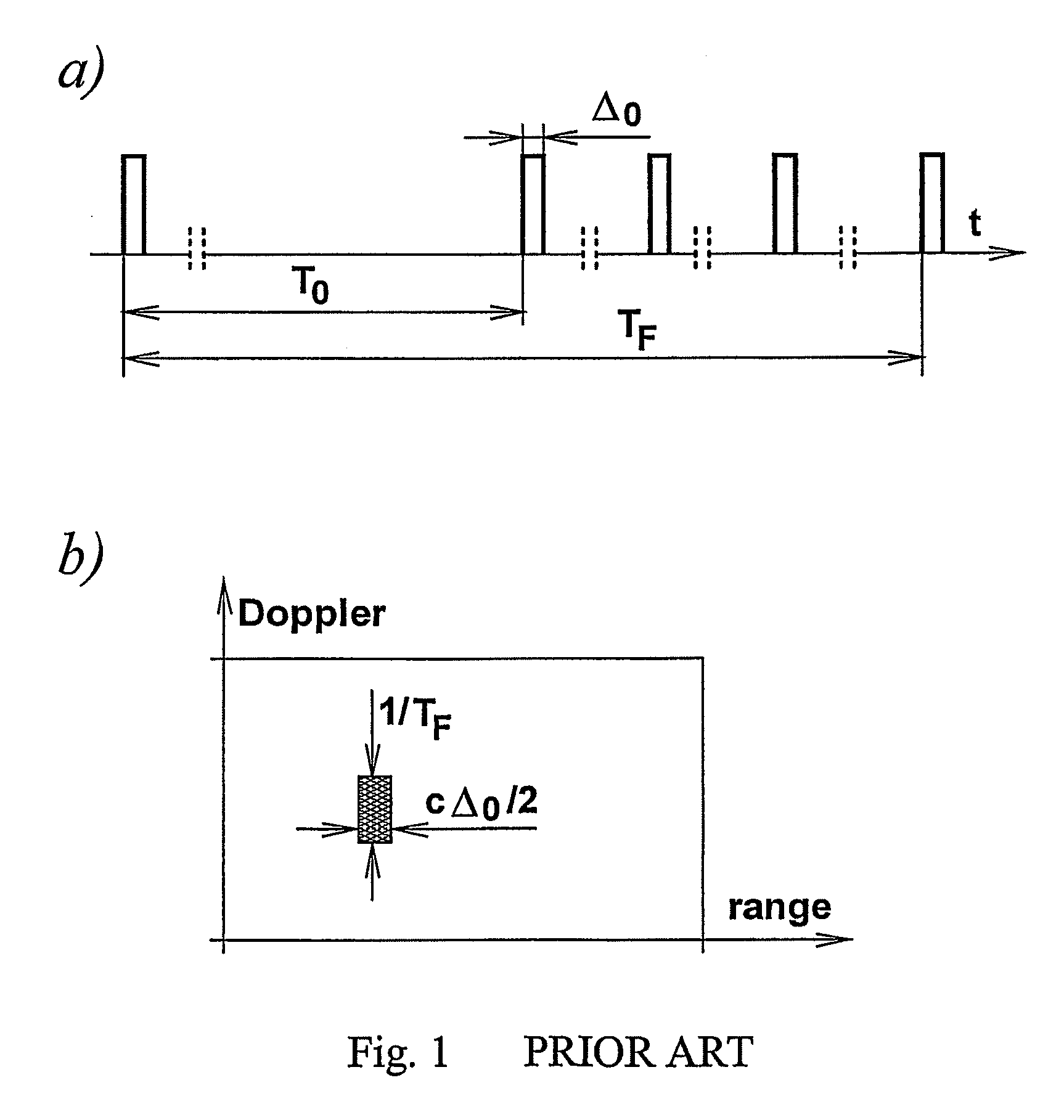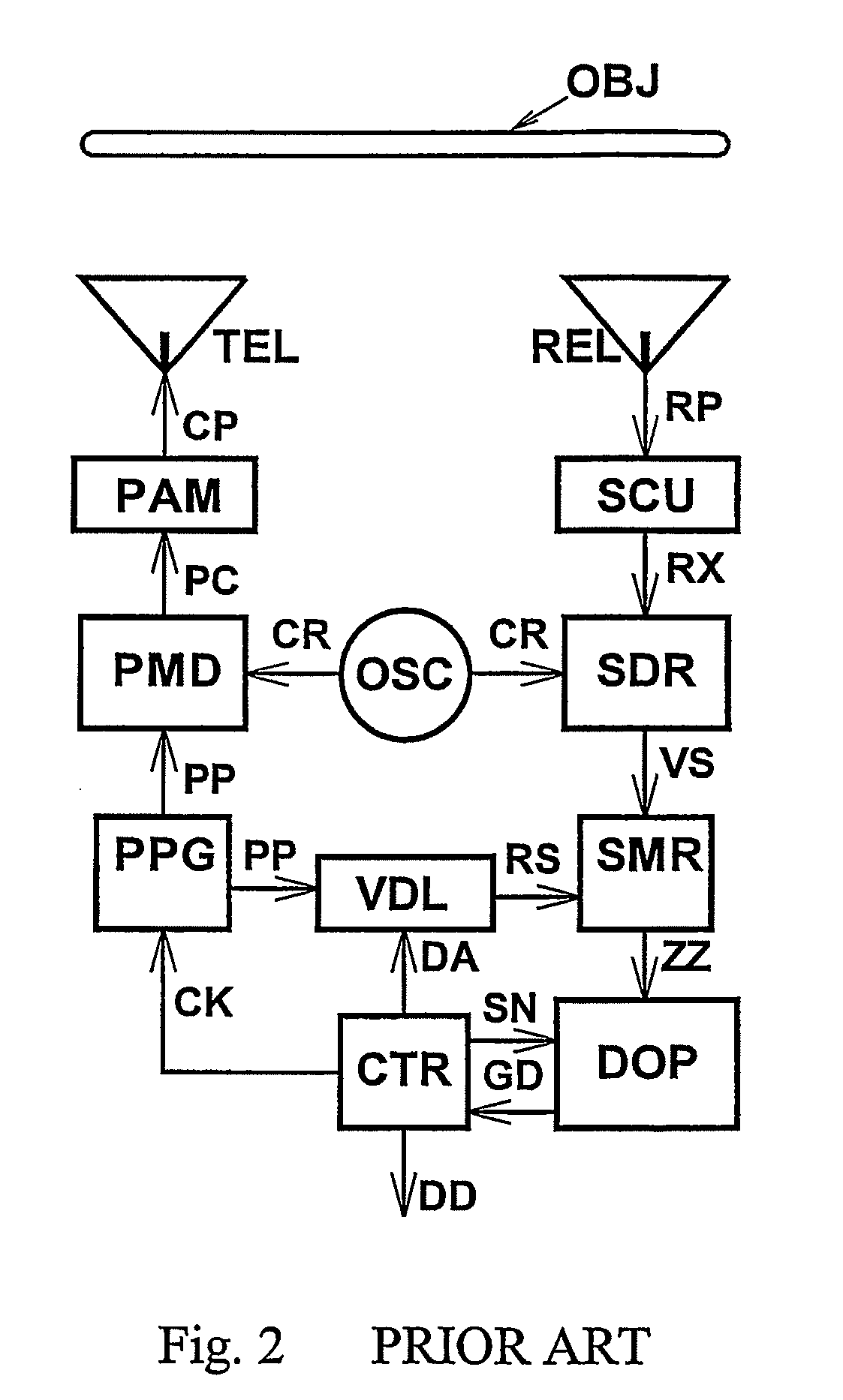Detection of a non-uniformly sampled sinusoidal signal and a doppler sensor utlizing the same
- Summary
- Abstract
- Description
- Claims
- Application Information
AI Technical Summary
Benefits of technology
Problems solved by technology
Method used
Image
Examples
Embodiment Construction
[0122]A Doppler sensor in accordance with the present invention is shown in FIG. 18 and corresponds with the prior art arrangement of FIG. 2 except as follows.
[0123]The pulse pattern generator PPG of FIG. 18 includes a cyclic difference set memory CDS and generates non-uniformly spaced pulses according to the technique described below. The Doppler processor DOP of FIG. 2 is replaced by a Doppler processor DP constructed in accordance with the present invention and shown in the functional block diagram of FIG. 9. Also, the control unit CTR generates additional signals, as explained further below.
[0124]The pulse pattern generator PPG may, like the generator PPG of FIG. 2, be arranged to generate pulses in the pattern shown at s(t) in FIG. 4. As indicated above, the pulse train s(t) can be regarded as the combination, by interleaving, of K regular pulse trains.
[0125]However, in the arrangement of FIG. 18, the pulses in the composite pulse train s(t) are preferably staggered in such a w...
PUM
 Login to View More
Login to View More Abstract
Description
Claims
Application Information
 Login to View More
Login to View More - R&D
- Intellectual Property
- Life Sciences
- Materials
- Tech Scout
- Unparalleled Data Quality
- Higher Quality Content
- 60% Fewer Hallucinations
Browse by: Latest US Patents, China's latest patents, Technical Efficacy Thesaurus, Application Domain, Technology Topic, Popular Technical Reports.
© 2025 PatSnap. All rights reserved.Legal|Privacy policy|Modern Slavery Act Transparency Statement|Sitemap|About US| Contact US: help@patsnap.com



